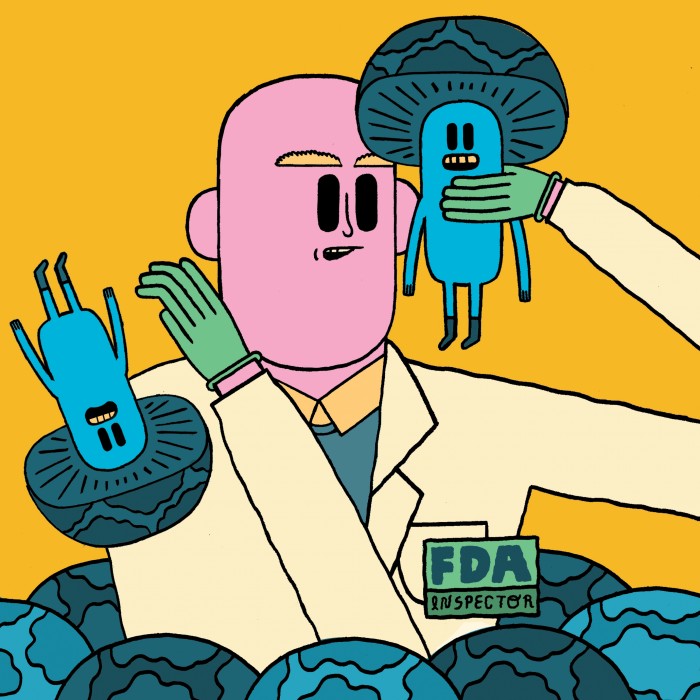Who Approved the Genetically Engineered Foods Coming to Your Plate? No One.
The debate over genetically modified foods is about to get a lot more heated in Washington, D.C.
DuPont Pioneer’s new waxy corn hybrid and a Penn State plant scientist’s “anti-browning” white button mushroom are the latest additions to a fast-growing pile of new genetically engineered crops that have so far avoided any government regulation.
New gene-editing techniques like CRISPR are making this possible, and they are underscoring the fact that the regulatory system hasn’t kept up with the breakneck pace of biotechnological innovation.
It’s not for lack of trying. Last summer, the White House called on the U.S. Department of Agriculture, the Environmental Protection Agency, and the Food and Drug Administration to “modernize” the federal system for regulating “products of biotechnology,” including crops. In line with that, in February the USDA informed the public of its intent to change its system for regulating genetically engineered organisms.

The USDA does the bulk of the regulating when it comes to genetically engineered crops, under a law called the Plant Protection Act, to protect other crops and the environment from “plant pests.” Specifically, the agency regulates a crop if it has been genetically engineered using a plant pest, meaning that the donor, the recipient, or the vector for delivering the new gene qualifies as a plant pest. That made a lot more sense for the previous generation of genetically engineered crops, commonly called GMOs. Most were made using a soil bacterium to deliver a new gene, were modified with a gene taken from a bacterium, or both. That triggered the “plant pest” regulatory mechanism.
Newer techniques like CRISPR can modify the genome without inserting a new gene and don't rely on plant pests, so they don’t trigger that mechanism. So far, the agency has determined that more than 30 genetically engineered crops are not subject to its regulations.
The fact that genetically engineered crops are escaping regulation only because they don't meet the legal definition of a plant pest means the system is not working, says Gregory Jaffe, director of biotechnology for the Center for Science in the Public Interest. “It’s not a science-based determination.”
Just how the USDA’s system might change is hard to predict. In February, the agency proposed several hypothetical approaches, which ranged from doing nothing to substantially increasing the USDA’s ability to review and regulate genetically engineered crops.
In the near future the agency will review public comments on those proposals. It will also consider the results of a newly launched study by the National Academies of Sciences, Engineering, and Medicine. The scientists, policy experts, and industry representatives in the study group are tasked with helping the USDA, FDA, and EPA prepare for the future by describing the scientific and technological advances likely to emerge in the next five to 10 years. They are also charged with determining whether future genetically engineered organisms could pose “different types of risks to existing products and organisms.”
Bernice Slutsky, senior vice president of domestic and international policy at the American Seed Trade Association, says regulators should be careful not to use the term “gene editing” too loosely. These techniques can be used in many different ways, and lumping the applications together “doesn’t provide enough nuance in terms of the ultimate product,” she argues, which could lead to unnecessary overregulation.
For example, CRISPR gives developers the ability to make very small, precise edits to the genome, such as the deletion of a single gene. In many cases the outcome is no different from one achieved using traditional techniques that rely on chemicals or radiation to induce mutations, says Slutsky. Crops developed that way are not regulated. “If you can get to the same product end point through traditional breeding as you can through a gene-editing method, why would you treat them differently from a regulatory perspective?”
But it could take years to finalize new regulations, and the uncertainty could stifle innovation. “A lot of developers are holding back until they know what the rules are,” says Slutsky.
In the meantime, it’s likely that the gene-edited crops that are developed will continue to earn unregulated status—and some may even find their way to grocery stores.
Keep Reading
Most Popular
Large language models can do jaw-dropping things. But nobody knows exactly why.
And that's a problem. Figuring it out is one of the biggest scientific puzzles of our time and a crucial step towards controlling more powerful future models.
How scientists traced a mysterious covid case back to six toilets
When wastewater surveillance turns into a hunt for a single infected individual, the ethics get tricky.
The problem with plug-in hybrids? Their drivers.
Plug-in hybrids are often sold as a transition to EVs, but new data from Europe shows we’re still underestimating the emissions they produce.
Stay connected
Get the latest updates from
MIT Technology Review
Discover special offers, top stories, upcoming events, and more.